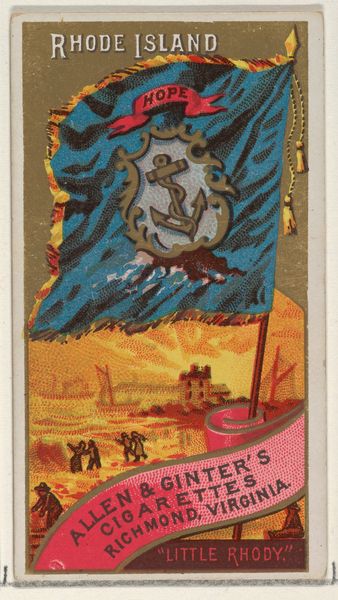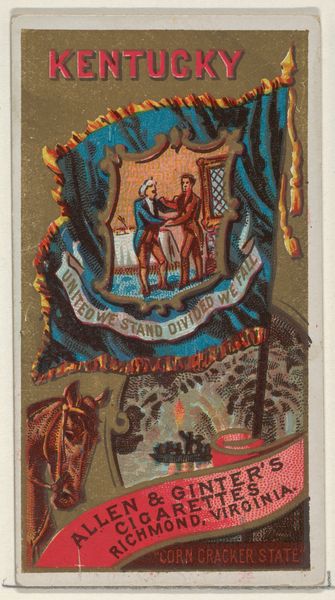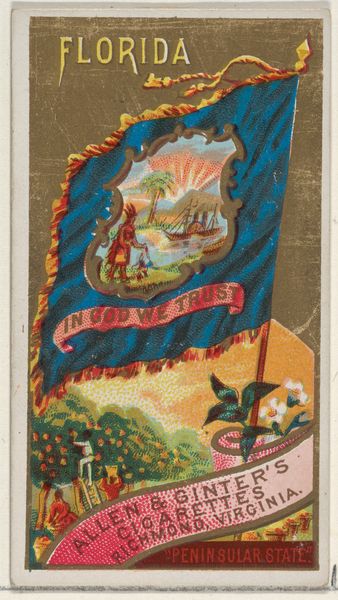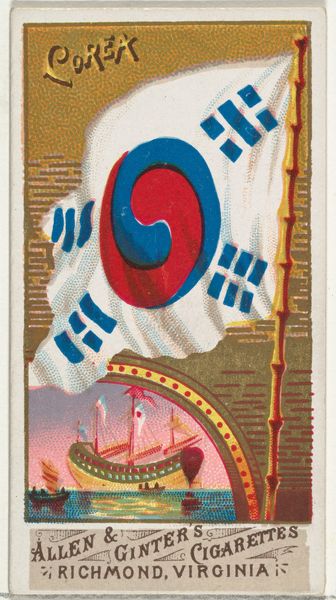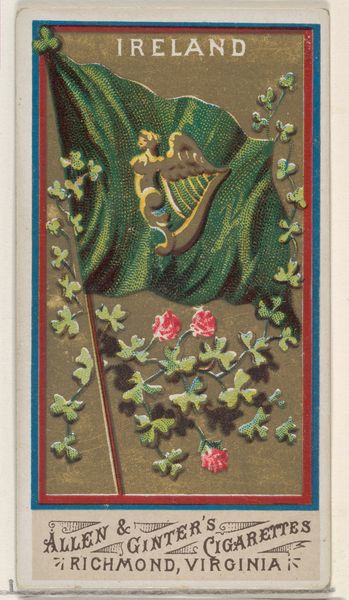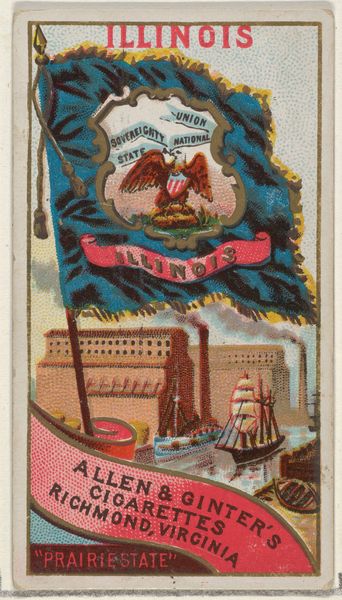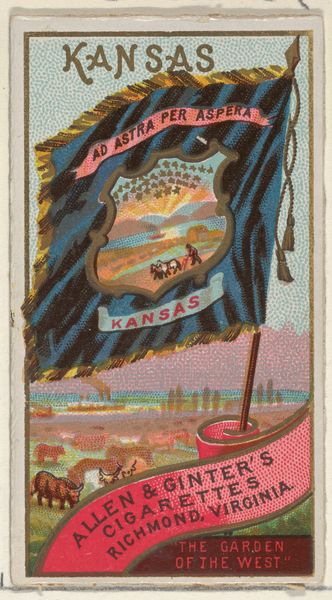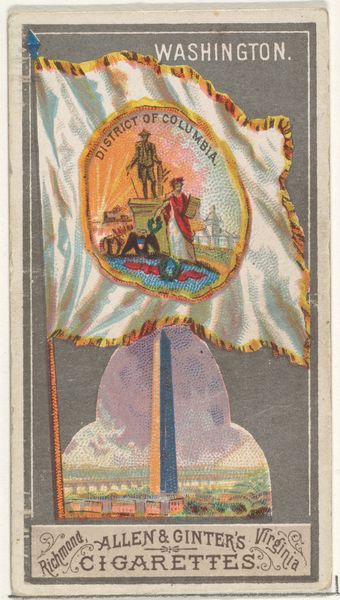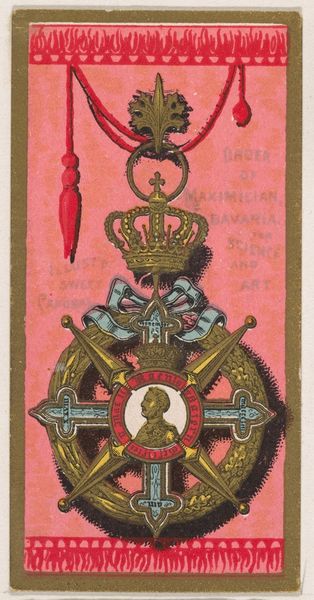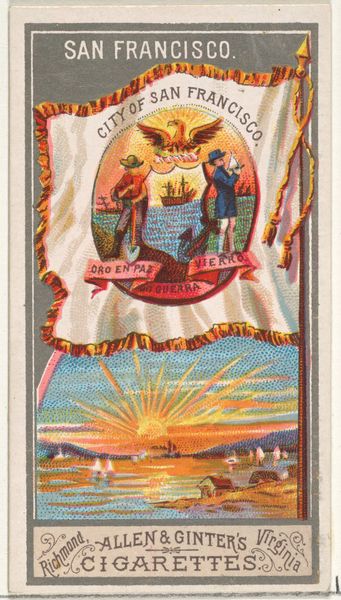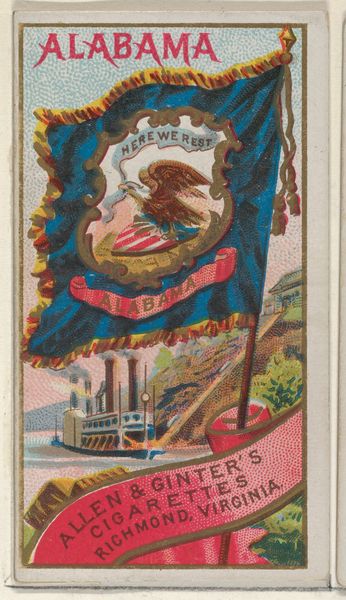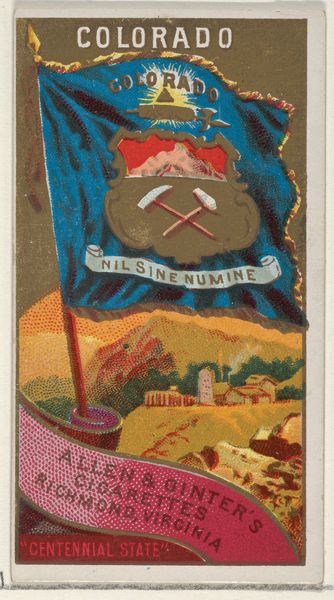
State Arms of Rhode Island, from the Military Series (N224) issued by Kinney Tobacco Company to promote Sweet Caporal Cigarettes 1888
0:00
0:00
drawing, graphic-art, coloured-pencil, print, watercolor
#
drawing
#
graphic-art
#
coloured-pencil
# print
#
watercolor
#
coloured pencil
#
naive art
Dimensions: Sheet: 2 3/4 × 1 1/2 in. (7 × 3.8 cm)
Copyright: Public Domain
Curator: Let's take a look at this curious piece titled "State Arms of Rhode Island," a print made around 1888 by the Kinney Tobacco Company. It's from a series of promotional cards for Sweet Caporal cigarettes, currently residing here at the Met. What strikes you initially about this small graphic? Editor: It has the charm of folk art! The vibrant red frame pops, but that anchor twisted with rope against the blue backdrop is what grabs me. I'm curious about how they translated metal into print form. Curator: Exactly! These tobacco cards offer insight into late 19th-century consumer culture. Imagine collecting these as incentives, trading them. It speaks volumes about how companies utilized art to push their products. Editor: Right. This card reveals a lot about printmaking as industry. Consider the process: someone had to create the original drawing, and someone else oversaw its mass production as chromolithographs. There were artisans enabling this, the invisible labour! What materials were used? It feels like a mix of watercolour, and colored pencils maybe? Curator: The materials most likely involved watercolor and colored pencil. This imagery was part of a strategic image campaign designed to align their brand with positive associations. National pride was very marketable! This "Arms of the State" series aimed at the civic virtue narrative. Editor: "Hope", is the banner overhead... Hope wasn't simply an abstract idea then, but rooted in industry, trade and a strong workforce. Curator: It becomes evident how businesses directly shape visual culture and, by extension, our perceptions of nationhood and progress. Even something as fleeting as a cigarette card played a role. Editor: These kinds of material items also serve as a historical touchpoint, which underscores that hope and industry were entwined with the realities of consumer capitalism. It shows the machinery behind image production. Curator: Thinking about this little artwork highlights how capitalist forces influenced the spread of cultural symbolism on a massive scale, truly intertwining it with the fabric of everyday life. Editor: And analyzing such humble, and mass-produced objects also pushes us to consider art's function beyond galleries and museums. I hadn't thought about all those factory workers churning these out!
Comments
No comments
Be the first to comment and join the conversation on the ultimate creative platform.
